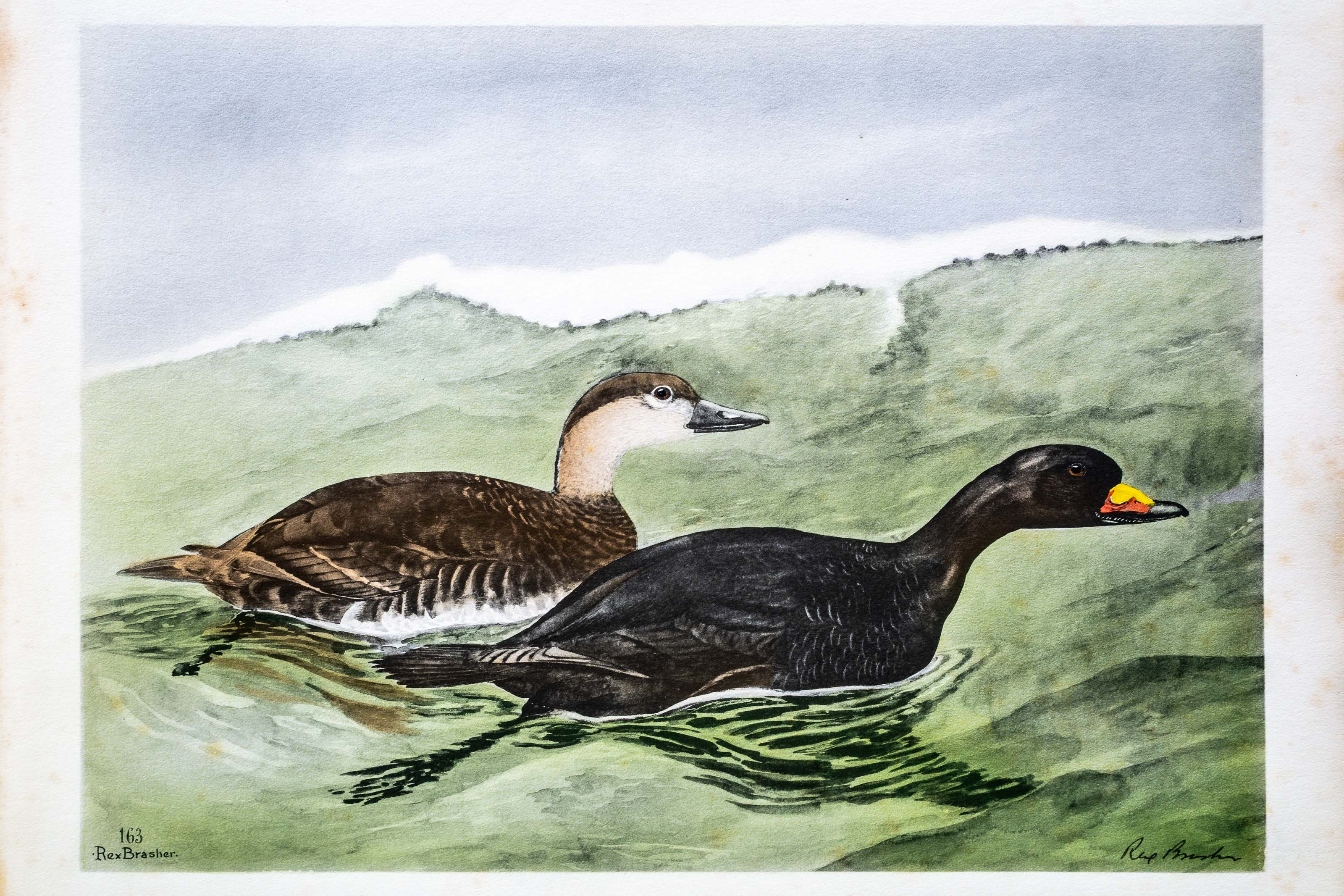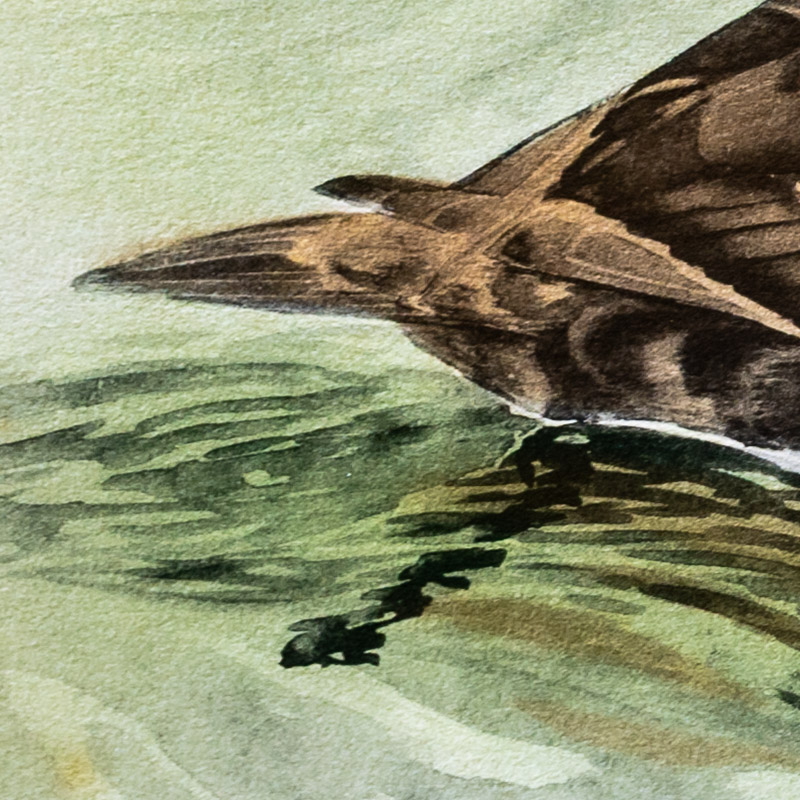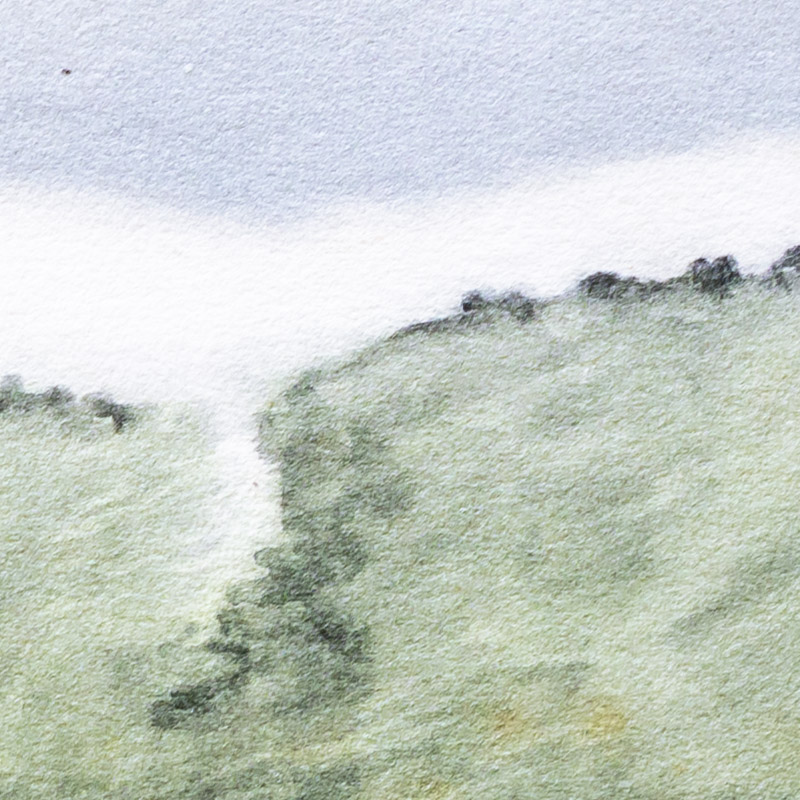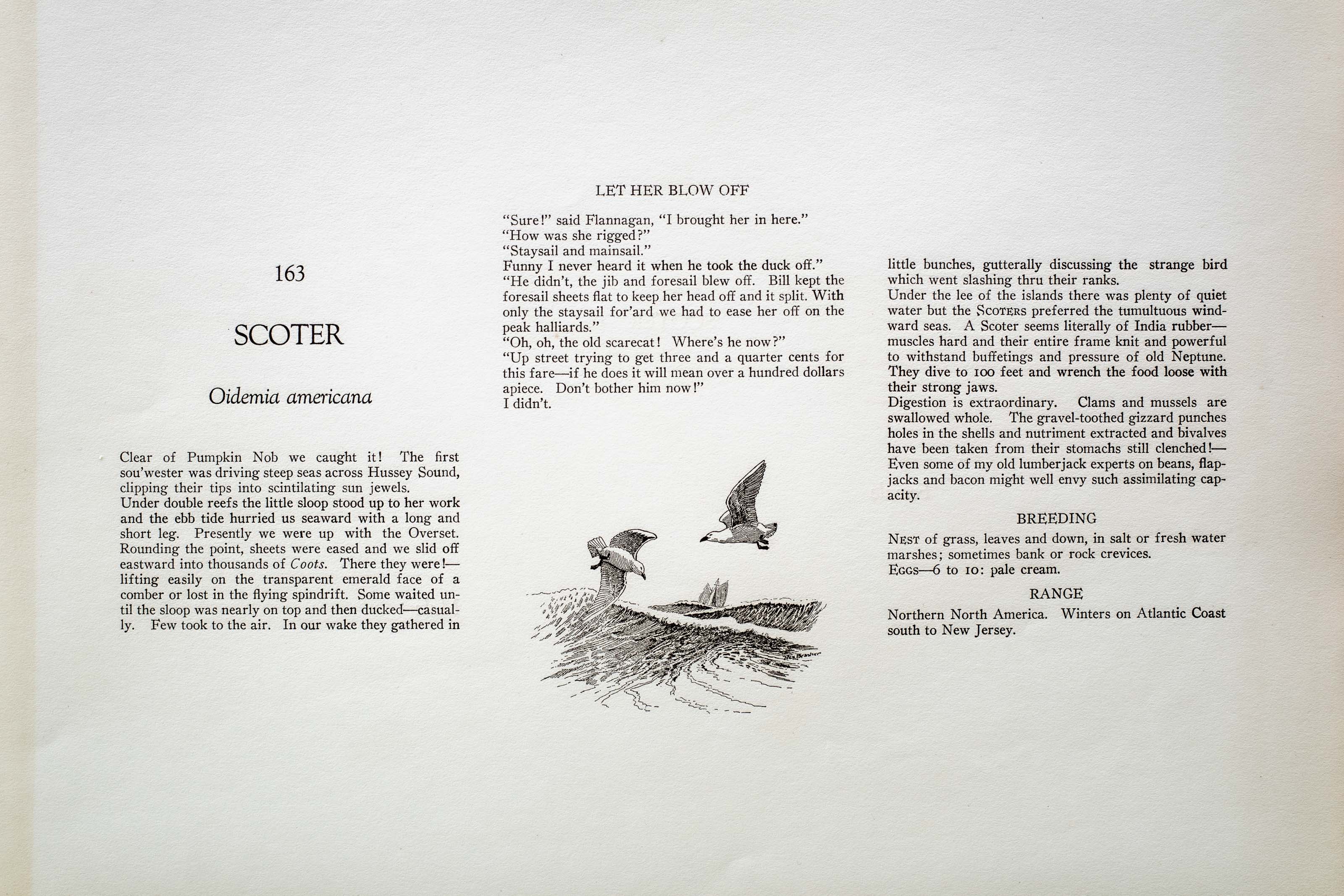






Unknown
1930
3
163
A team of dedicated board members, volunteers, and student interns has published every page in Volume 9. This volume includes 360 images of paintings and lyrical descriptions of birds, now available online for everyone to enjoy anywhere in the world. This is a monumental task. Each volume requires approximately 400 hours to photograph, edit, transcribe, catalog, and publish online. We need your support to complete this work.
If you're tech-savvy, have a good eye, are meticulous with details, and love structured data, please consider volunteering by emailing us at hello@rexbrasher.org.
We encourage all bird lovers and supporters to consider a monetary donation to support our mission to make Rex's work available for everyone. You can provide a one-time or recurring donation online.
Clear of Pumpkin Nob we caught it! The first sou'wester was driving steep seas across Hussey Sound, clipping their tips into scintillating sun jewels.
Under double reefs the little sloop stood up to her work and the ebb tide hurried us seaward with a long and short leg. Presently we were up with the Overset. Rounding the point, sheets were eased and we slid off eastward into thousands of Coots. There they were! — lifting easily on the transparent emerald face of a comber or lost in the flying spindrift. Some waited until the sloop was nearly on top and then ducked — casually. Few took to the air. In our wake they gathered in little bunches, gutterally discussing the strange bird which went slashing thru their ranks.
Under the lee of the islands there was plenty of quiet water but the SCOTERS preferred the tumultuous windward seas. A Scoter seems literally of India rubber — muscles hard and their entire frame knit and powerful to withstand buffetings and pressure of old Neptune. They dive to 100 feet and wrench the food loose with their strong jaws.
Digestion is extraordinary. Clams and mussels are swallowed whole. The gravel-toothed gizzard punches holes in the shells and nutriment extracted and bivalves have been taken from their stomachs still clenched! — Even some of my old lumberjack experts on beans, flapjacks and bacon might well envy such assimilating capacity.
NEST of grass, leaves and down, in salt or fresh water marshes; sometimes bank or rock crevices.
EGGS — 6 to 10: pale cream.
Northern North America. Winters on Atlantic Coast south to New Jersey.